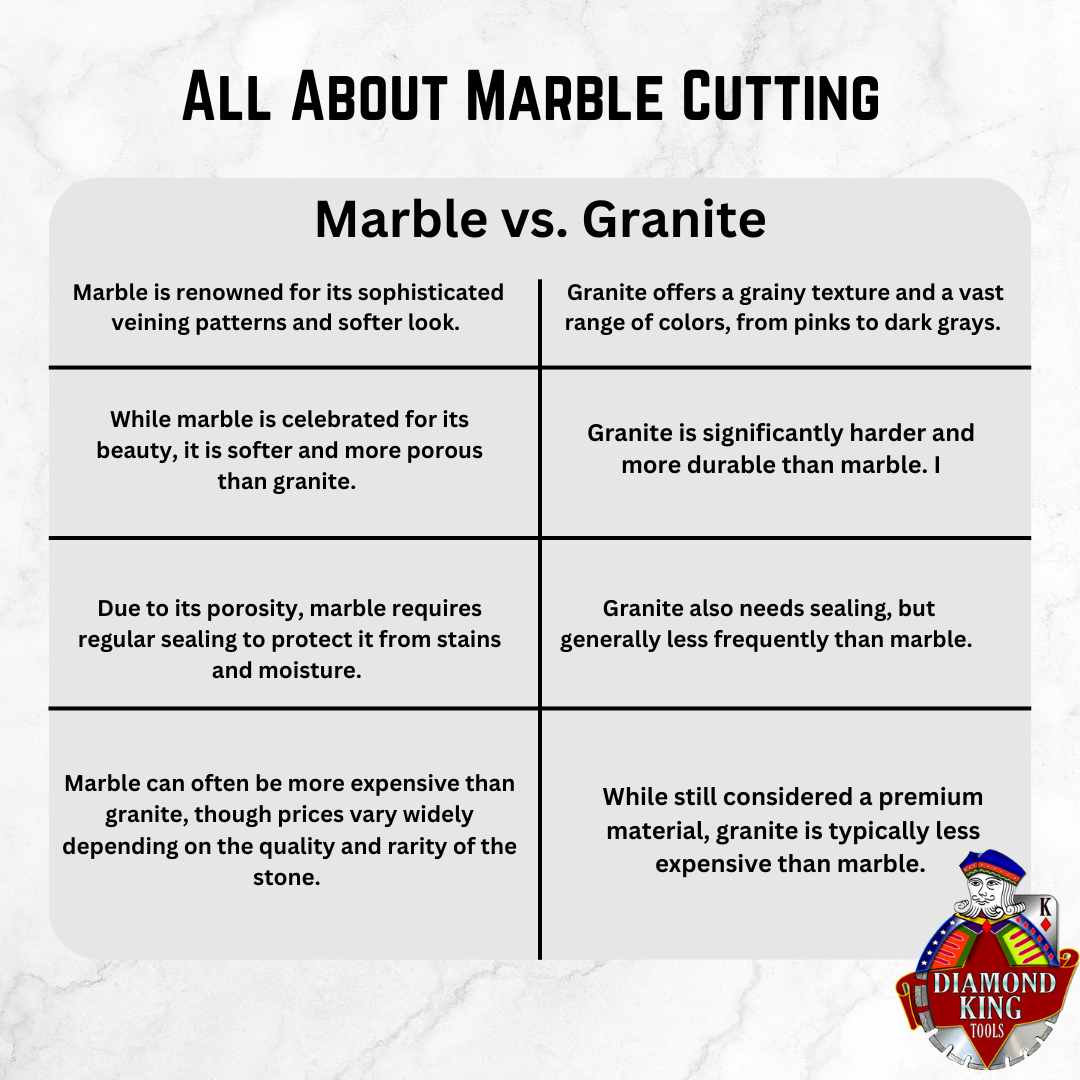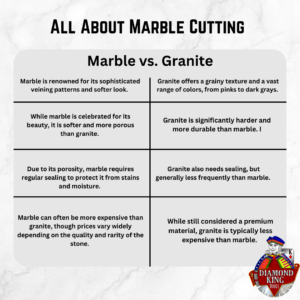Marble, a metamorphic rock known for its timeless beauty and elegant veining, has been a prized material in construction and design for centuries. From ancient sculptures to modern countertops, marble continues to captivate with its aesthetic appeal and unique characteristics. Understanding the intricacies of marble cutting is essential for achieving the desired look and functionality in various projects. This blog post explores the nuances of marble cutting, contrasting it with granite, another popular but distinctly different material.
1. Composition Matters: Marble vs. Granite
Marble: Marble originates as limestone, transforming under intense heat and pressure to become the beautiful, veined rock we know. Its primary mineral component is calcite, which gives marble its characteristic softness and susceptibility to chemical reactions.
Granite: Granite, in contrast, is an igneous rock formed from cooled molten lava. Its composition includes quartz, feldspar, and mica, contributing to its grainy appearance and diverse color palette. These minerals also impart granite with a higher hardness and durability compared to marble.
2. The Aesthetic Appeal
Marble’s Soft Elegance: Marble is renowned for its sophisticated veining patterns and softer look. It is typically available in shades of white and gray, which exude a classic and timeless appeal. These veining patterns are often a focal point in design, lending a touch of luxury to any space.
Granite’s Vibrant Variety: Granite offers a grainy texture and a vast range of colors, from pinks to dark grays. Its varied mineral content results in striking color variations and patterns, making it a versatile choice for various design aesthetics.
3. Durability and Hardness: The Strength Factor
Marble’s Delicate Nature: While marble is celebrated for its beauty, it is softer and more porous than granite. This makes it more prone to scratches, stains, and etching, particularly from acidic substances like citrus juices or vinegar.
Granite’s Robust Resistance: Granite is significantly harder and more durable than marble. Its resistance to scratches and lower porosity make it ideal for high-traffic areas and kitchen countertops, where durability is paramount.
4. Maintenance: Caring for Your Stone
Marble’s High Maintenance: Due to its porosity, marble requires regular sealing to protect it from stains and moisture. Cleaning marble involves using pH-neutral cleaners to avoid damaging the surface.
Granite’s Lower Maintenance: Granite also needs sealing, but generally less frequently than marble. Its robustness makes it easier to maintain over time, making it a practical choice for busy households.
5. Cost Considerations: Investment in Elegance
Marble’s Premium Price: Marble can often be more expensive than granite, though prices vary widely depending on the quality and rarity of the stone. Its luxurious appearance and historical significance often justify the higher cost for many homeowners and designers.
Granite’s Cost Efficiency: While still considered a premium material, granite is typically less expensive than marble. Its combination of durability, variety, and relatively lower cost makes it a popular choice for many construction and renovation projects.
Both marble and granite offer unique advantages that cater to different needs and tastes. Marble’s elegance and classic appeal make it a favorite for areas where beauty is paramount, while granite’s durability and vibrant variety make it suitable for more demanding environments.
When embarking on a project, consider the specific requirements of the space, the desired aesthetic, and the maintenance commitment you are willing to make. Whether you choose the timeless elegance of marble or the robust versatility of granite, both materials can transform your space into a masterpiece of natural beauty.



